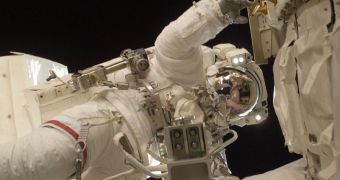NASA and ESA are working on a new internet – in space. Well, not really, but it sounds more spectacular this way.
What they're really working on is a new communications protocol, Disruption-Tolerant Networking (DTN), modeled after the TCP/IP protocols used by the internet, which would enable communications between distant objects.
In this case, they have tested the protocol by controlling a Lego robot remotely. If that sounds like something a five-year-old could do, it's because it is.
The big difference is that the robot, on Earth, was controlled from space, which you should have been expecting, this being NASA and ESA after all.
Sunita Williams, the current commander of the ISS, used a laptop to direct the robot back on Earth in a German ESA center, relying on the new protocol to deliver the data.
DTN makes use of whatever communication channel is available for as long as it is available to get the data through. Data packets are transmitted and received in bursts and everything works even if there are interruptions or problems along the way.
DTN is designed for communication to and from distant spacecraft, which means that it's designed to deal with problems such as huge latency, i.e. the time it takes to get the data from one point to the other.
It's also designed as a standard, meaning all equipment adhering to it will be able to "talk" to each other. It can deal with errors and faulty connections, by routing the data via any channel available.
"The demonstration showed the feasibility of using a new communications infrastructure to send commands to a surface robot from an orbiting spacecraft and receive images and data back from the robot," Badri Younes, deputy associate administrator for space communications and navigation at NASA Headquarters in Washington said.
"The experimental DTN we've tested from the space station may one day be used by humans on a spacecraft in orbit around Mars to operate robots on the surface, or from Earth using orbiting satellites as relay stations."

 14 DAY TRIAL //
14 DAY TRIAL //